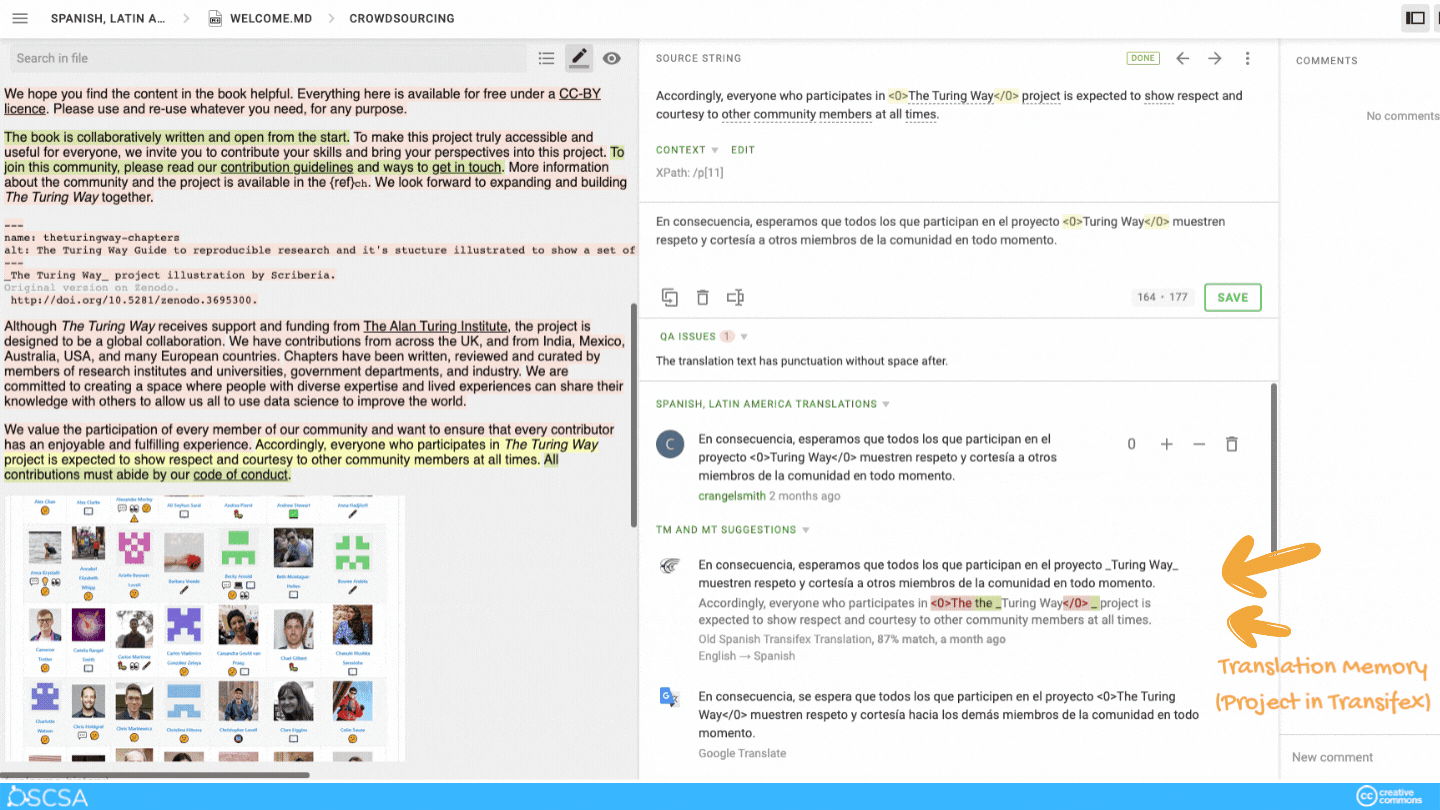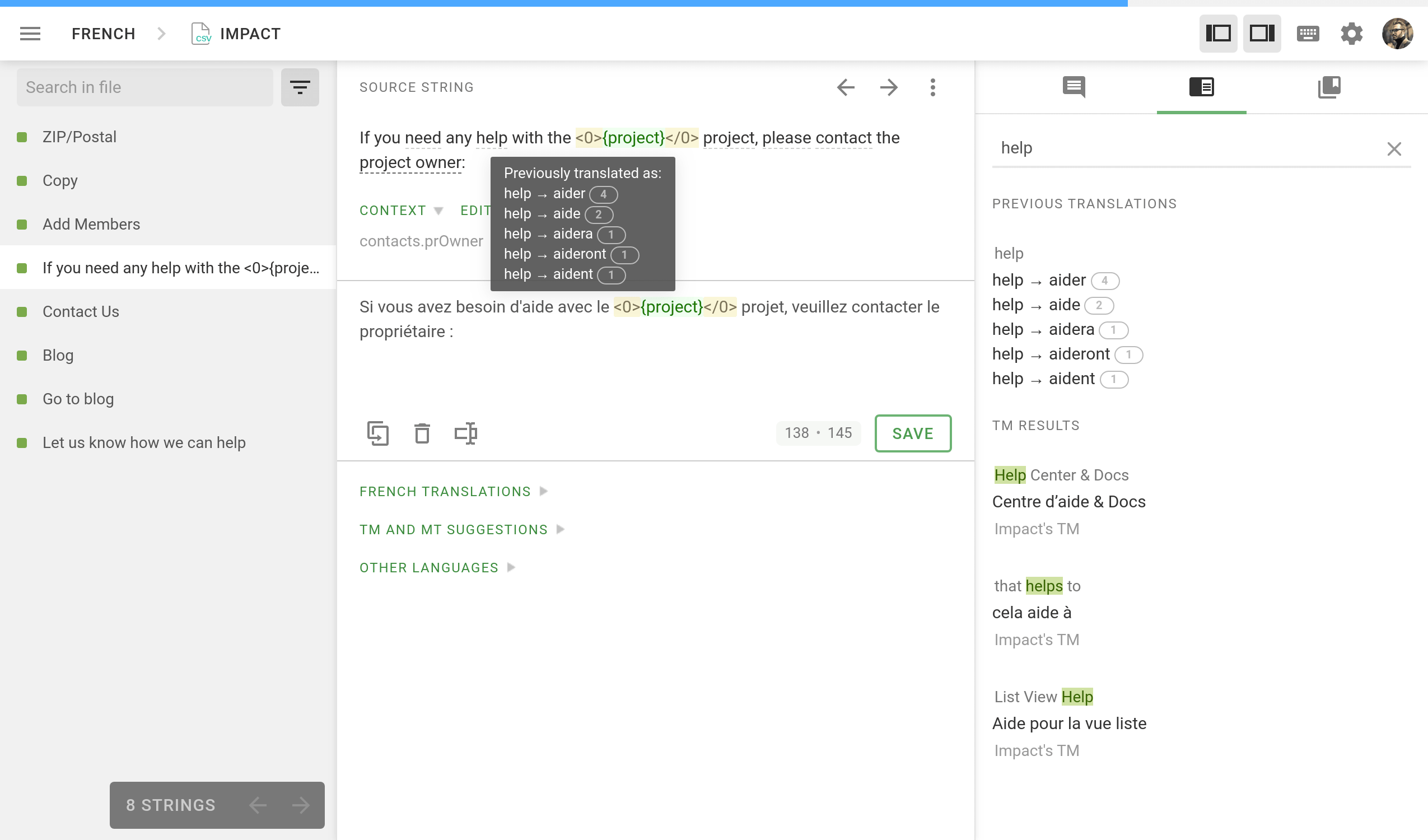Welcome to the Translation and Localisation Team of The Turing Way!#
We are members of The Turing Way community with different motivations to localise the content to different languages.
Feel free to join the #translation channel in The Turing Way slack.
You will also have to create a Crowdin account but more on that in the next section
The team has a fortnightly call on Tuesdays at 5pm UTC to co-work, discuss, and check the progress of the translation.
These sessions are open to anyone interested in participating.
You can find these activities in The Turing Way calendar.
Please note that these calls are in English but we are happy to facilitate other co-working calls in different languages.
The deployment of these translated versions is work in progress, and some parts of this workflow may change in the future. Feel free to contact anyone on the #translation channel of the The Turing Way Slack if you have any ideas and feedback to help our work.
Asynchronous translation#
Everyone interested in participating in a translation effort should be able to work asynchronously, so don’t worry if you cannot join the fortnightly calls. More info can be found in the next chapter about our localisation workflow.
Join or create a language team#
Before starting a translation project, check out the existing languages being translated. Is the language that interests you in the localisation platform? If it isn’t, reach out to the team to create a new translation team. You can see the list of language teams and their managers in the project’s Readme If the language team already exists reach out to the team so you can join them.
When starting a new language translation, there are several aspects to consider in terms of the workflow and translation guidelines. The decisions at this stage include deciding what terms not to translate, deciding on the translation of some terms, and the governance of the team, to determine who is responsible for each section.
Define translation guidelines#
It is key to set translation guidelines for each language. These guidelines are essential to harmonise and standardise translations. They will guide newcomers on how to translate and review translations and may be useful for future teams translating other projects. These language-specific guidelines should include the use of inclusive language.
For example, the book Teaching Tech Together was collaboratively translated to Spanish. The team defined their guidelines to account for regional differences and avoid gendered and other non-inclusive expressions. They describe the whole process (in Spanish) here and an adaptation of their guidelines to English can be found here.
Document the translation guidelines for your selected language to be discussed and updated by the rest of the team. Every team has a repository with these guidelines in the GitHub organisation. Check examples for Portuguese, Arabic, and Turkish. We have also set up a public page for The Turing Way in Crowdin with a README file summarising some of the translation guidelines. Make sure you read these guidelines before you start translating for the first time.
Create and update a glossary#
We strongly suggest setting a glossary through the localisation platform. You can read more about project glossaries in Adding terms to the glossary. The Carpentries Glosario and the Localization Lab glossary are two good examples of such glossaries.
Team governance#
We have teams for each language, so that no one works alone. Each team can decide roles for their project members. In the translation platform, these roles can translate into having different permissions. Roles in Crowdin include manager, translator, and proofreader.
Manager – has similar rights as a project owner except for the ability to manage some of the owner’s Resources (for instance, configuring MT engines, advanced workflows, and more) and delete projects.
Proofreader – can translate and approve strings. Unlike the manager, the Proofreader doesn’t have access to project settings.
Translator – can translate strings and vote for translations added by other members.

Fig. 164 Illustration of translation as a way to reach global accessibility. The Turing Way project illustration by Scriberia. Used under a CC-BY 4.0 licence. DOI: 10.5281/zenodo.3332807#
In each co-working or external session, prioritise those chapters that are outdated or close to completion. Check out our guidelines for a list of the priorities.
Translation is a continuous process#
As The Turing Way content grows, the translated content does too. We strongly encourage monitoring the new content and updating the translation fork regularly. While updates of the translated content might change according to the availability of resources, it is good practice to:
Set periodical reviews to improve translations
Update translation guidelines and glossaries
If you have any recommendations for improving the translation guidelines or setting up language-specific rules, contact the translation and localisation team. We are very eager to improve the workflow and make The Turing Way a global project accessible to the wider community.
In the next chapter, you’ll be introduced to Crowdin and how we use it to translate The Turing Way.
- 1
This image and description are borrowed directly from Crowdin docs.
